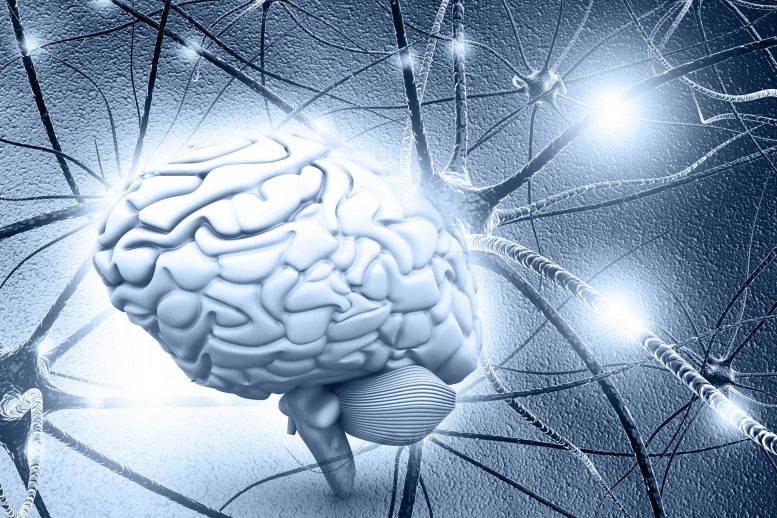
Researchers from UC San Francisco have discovered a new brain circuit involving astrocytes, a lesser-known type of brain cell, which play a significant role in moderating overactive neurons and modulating attention and perception. The study reveals that the neurotransmitter noradrenaline sends signals to these astrocytes to quiet down overactive neurons, thus aiding the brain in transitioning smoothly between states of alertness and relaxation, a finding that may offer new insights into treating attention disorders like ADHD.
How little-known brain cells help to reduce the activity of overexcited neurons during acute stress.
The sight of an overflowing email inbox on a Monday morning can make your head whirl. Pausing for a moment to breathe, your mind becomes clear enough to sort through the emails individually. This soothing effect is attributed to a recently identified brain circuit that involves a relatively obscure type of brain cell, known as the astrocyte. A new study from UC San Francisco reveals that astrocytes tune into and moderate the chatter between overactive neurons.
This novel brain circuit, detailed in a paper recently published in the journal Nature Neuroscience, has a part to play in adjusting attention and perception. It could potentially provide a new approach to treat attention disorders like ADHD, which are not fully understood or effectively managed, despite extensive research focused on the role of neurons.
Scientists found that noradrenaline, a neurotransmitter that can be thought of as adrenaline for the brain, sends one chemical message to neurons to be more alert while sending another to astrocytes to quiet down the over-active neurons.
“When you’re startled or overwhelmed, there’s so much activity going on in your brain that you can’t take in any more information,” said Kira Poskanzer, Ph.D., an assistant professor of biochemistry and biophysics and senior author of the study.
Until this study, it was assumed that brain activity just quieted down with time as the amount of noradrenaline in the brain dissipated.
“We’ve shown that, in fact, it’s astrocytes pulling the handbrake and driving the brain to a more relaxed state,” Poskanzer said.
A Missing Piece
Astrocytes are star-shaped cells woven between the brain’s neurons in a grid-like pattern. Their many star arms connect a single astrocyte to thousands of synapses, which are the connections between neurons. This arrangement positions astrocytes to eavesdrop on neurons and regulate their signals.
These cells have traditionally been thought of as simple support cells for neurons, but new research in the last decade shows that astrocytes respond to a variety of neurotransmitters and may have pivotal roles in neurologic conditions like Alzheimer’s disease.
Michael Reitman, Ph.D., first author of the paper who was a graduate student in Poskanzer’s lab when he did the research, wanted to know whether astrocyte activity could explain how the brain recovers from a burst of noradrenaline.
“It seemed like there was a central piece missing in the explanation of how our brains recover from that acute stress,” said Reitman. “There are these other cells right nearby which are sensitive to noradrenaline and might help coordinate what the neurons around them are doing.”
Gatekeepers of Perception
The team focused on understanding perception, or how the brain processes sensory experiences, which can be quite different depending on what state a person (or any other animal) is in at the time.
For example, if you hear thunder while cozying up indoors, the sound may seem relaxing and your brain may even tune it out. But if you hear the same sound out on a hike, your brain may become more alert and focused on safety.
“These differences in our perception of a sensory stimulus happen because our brains are processing the information differently, based on the environment and state we’re already in,” said Poskanzer, who is also a member of the Kavli Institute for Fundamental Neuroscience.
“Our team is trying to understand how this processing looks different in the brain under these different circumstances,” she said.
Completing the Puzzle
To do that, Poskanzer and Reitman looked at how mice responded when given a drug that stimulates the same receptors that respond to noradrenaline. They then measured how much the mice’s pupils dilated and looked at brain signals in the visual cortex.
But what they found seemed counterintuitive: rather than exciting the mice, the drug relaxed them.
“This result really didn’t make sense, given the models we have, and that led us down the path of thinking that another cell type could be important here,” Poskanzer said. “It turns out that these two things are yoked together in a feedback circuit. Given how many neurons each astrocyte can talk to, this system makes them really important and nuanced regulators of our perception.”
The researchers suspect that astrocytes may play a similar role for other neurotransmitters in the brain, since being able to transition smoothly from one brain state to another is essential for survival.
“We didn’t expect the cycle to look like this, but it makes so much sense now,” Poskanzer said. “It’s so elegant.”
Reference: “Norepinephrine links astrocytic activity to regulation of cortical state” by Michael E. Reitman, Vincent Tse, Xuelong Mi, Drew D. Willoughby, Alba Peinado, Alexander Aivazidis, Bat-Erdene Myagmar, Paul C. Simpson, Omer A. Bayraktar, Guoqiang Yu, and Kira E. Poskanzer, 30 March 2023, Nature Neuroscience.
DOI: 10.1038/s41593-023-01284-w
The study was funded by the National Institutes of Health and the National Science Foundation.




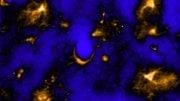
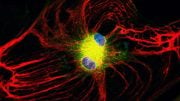
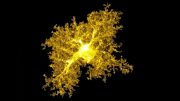

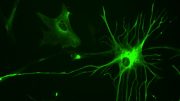
Be the first to comment on "Astrocytes: The Unsung Heroes of Stress Management"